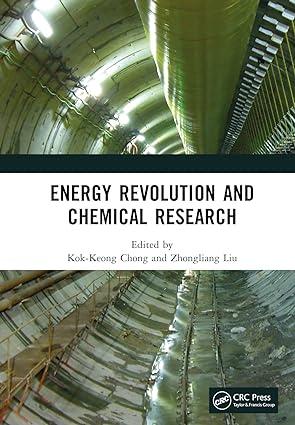Question
1. Combustion, Emissions, Energy Conversion, Efficiency, Heat Rate and Capacity Factor This question concerns the Fort Nelson natural gas (NG) power plant in the northern
1. Combustion, Emissions, Energy Conversion, Efficiency, Heat Rate and Capacity Factor This question concerns the Fort Nelson natural gas (NG) power plant in the northern BC and the possibility of replacement with a solar PV plant. We will first evaluate the existing plant, energy production, emissions and then consider a solar PV plant as an alternative. a) Assume NG is 100% methane (CH4). Balance the combustion reaction of methane given below. What is the molar mass of NG? How many moles of CO2 are released for the combustion of one mole of NG? CH4 + ?O2 CO2 + ?H2O b) Calculate the carbon intensity and carbon dioxide (CO2) intensity of NG in gC/kWhth and gCO2/kWhth. The higher heating value of methane is 55.5 MJ/kg. c) According to BC government (see: Electricity emission intensity factors for grid-connected entities - Province of British Columbia (gov.bc.ca), the grid emission factors for the Integrated grid and the Fort Nelson grid were 11.5 and 486 tCO2/GWhe in 2022, respectively. In the case of the Integrated grid, this means that if you consume 1 GWh of electricity from this grid (i.e., the integrated grid) you release 11.5 tons of CO2. RETScreen Expert software reports a single value emission factor of 18 tCO2/GWhe for BC. We assume the value of 18 tCO2/GWhe is calculated by a weighted average of the two emission factors. What faction (or percentage) of electricity in BC is supplied through the Integrated grid and what faction (or percentage) is provided through the Fort Nelson grid? d) Our NG thermal plant has a thermal efficiency of 40%. What are the CO2 emissions in tCO2 per GWh of electricity (tCO2/GWhe)? How does this compare to the reported value of 486 tCO2/GWhe from the BC government (is it lower or higher)? (Hint: use the CO2 intensity you calculated in part b to calculate the CO2 emissions in tCO2 per GWh of electricity) e) If the discrepancy in the CO2 emissions calculated in part d and reported by BC government can be explained by losses due to T&D losses, that would be percentage of T&D losses? (T&D losses
= transmission and distribution losses, i.e., excess energy must be consumed to deliver the 1 GWhe to the customer) f) What is the heat rate of this plant if the efficiency is 40%? g) If the power plant is 73 MW and operates with an annual capacity factor of 54.4%, how much electricity in MWh is produced per year? What is the amount of released CO2? (Assume an emission factor of 486 tCO2/GWhe)
Step by Step Solution
There are 3 Steps involved in it
Step: 1

Get Instant Access to Expert-Tailored Solutions
See step-by-step solutions with expert insights and AI powered tools for academic success
Step: 2

Step: 3

Ace Your Homework with AI
Get the answers you need in no time with our AI-driven, step-by-step assistance
Get Started


